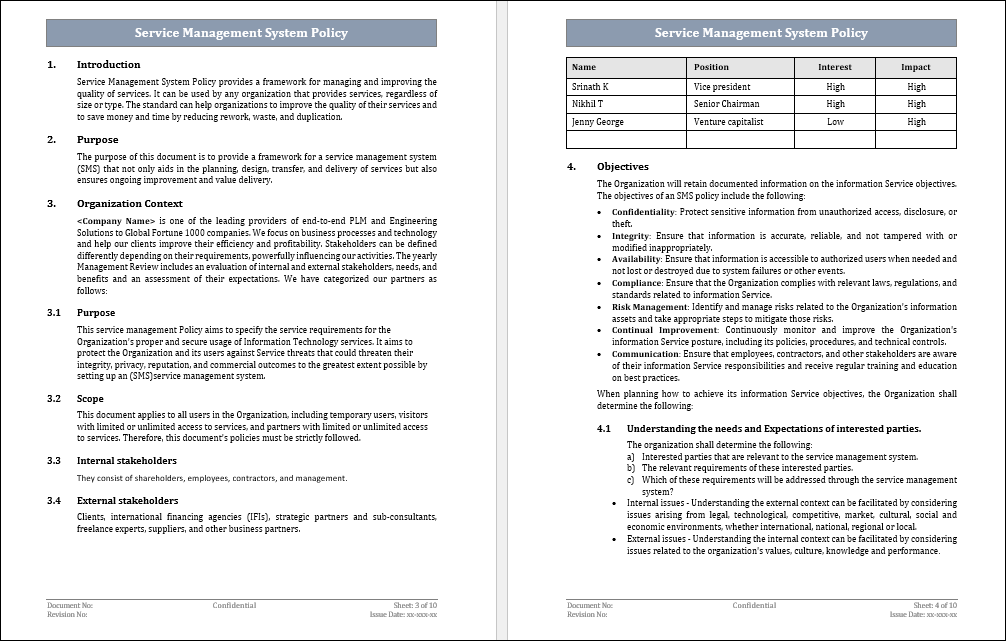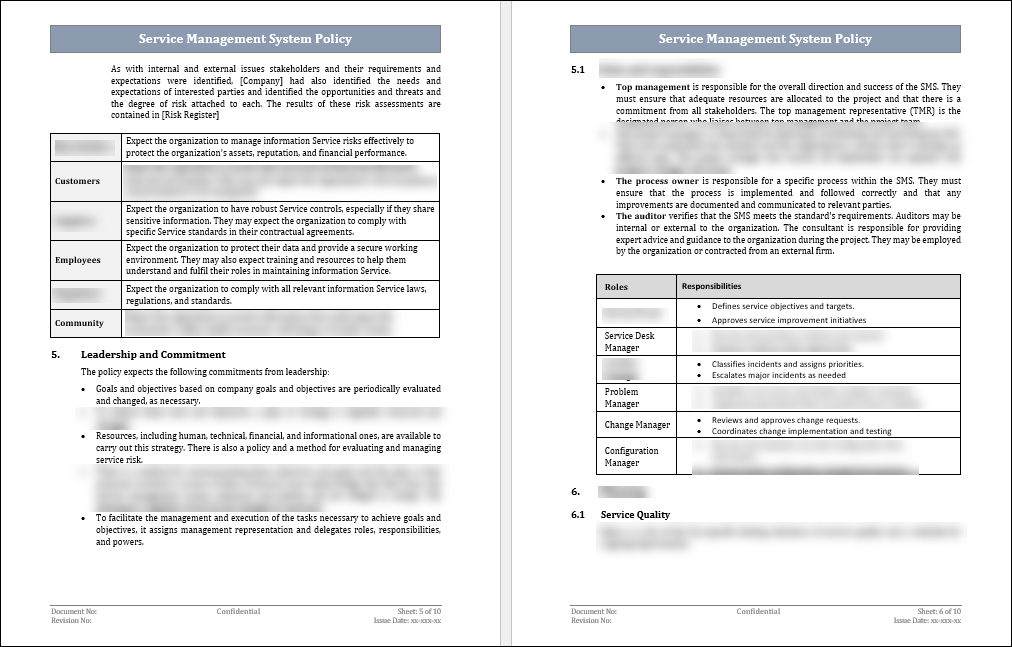
A Service Management System (SMS) Policy Template in IT Governance is a fundamental document that outlines the concepts, objectives, and procedures that govern how IT services are delivered and managed inside an organisation. This template expresses the organization's commitment to maintaining a strong service management system, outlines roles and duties, and establishes a framework for continual development. It typically addresses key aspects such as service quality standards, incident response protocols, change management procedures, and adherence to relevant industry standards, ensuring a structured approach to IT service delivery that is consistent with the organization's strategic goals and regulatory obligations.

A Service Management System (SMS) Policy Template in IT Governance is a fundamental document that outlines the concepts, objectives, and procedures that govern how IT services are delivered and managed inside an organisation. This template expresses the organization's commitment to maintaining a strong service management system, outlines roles and duties, and establishes a framework for continual development. It typically addresses key aspects such as service quality standards, incident response protocols, change management procedures, and adherence to relevant industry standards, ensuring a structured approach to IT service delivery that is consistent with the organization's strategic goals and regulatory obligations.
Moreover, the SMS Policy Template plays a pivotal role in promoting a culture of accountability and continual improvement. By establishing clear expectations for service management practices, organizations can systematically identify areas for enhancement, address weaknesses, and optimize IT service delivery over time.
Here are key steps to design a comprehensive SMS Policy Template:
Step 1 - Define Objectives and Scope: Clearly describe the SMS Policy Template's aims and scope. Determine which aspects of service management the policy will address, such as incident management, change management, service levels, and continuous improvement.
Step 2 - Understand Organizational Goals: Align the SMS Policy with the overall organisational aims and objectives. Ensure that the policy aligns with the organization's strategic direction and contributes to overall business performance.
Step 3 - Identify Key Components: Determine the key elements that must be addressed in the policy. This could contain roles and duties, service quality standards, incident response processes, change management procedures, and compliance requirements.
Step 4 - Adhere to Standards and Frameworks: Incorporate industry standards and best practices, such as ITIL (Information Technology Infrastructure Library) and ISO/IEC 20000, within the policy. Following defined frameworks guarantees that the organization's service management practices are in line with industry benchmarks.
Step 5 - Clear and Concise Language: Use clear and concise language in the policy to make it accessible to a wide audience. Avoid unnecessary technical jargon and ensure that the document is easily understandable by stakeholders at all levels of the organization.
Step 6 - Define Roles and Responsibilities: Clearly define the roles and responsibilities of important players in service management. This comprises positions in incident management, change management, service desk operations, and other associated functions.
Step 7 - Set Service Quality Standards: Define the service quality criteria and expectations. This comprises service level agreements (SLAs), key performance indicators (KPIs), and other metrics used to assess and monitor the performance of IT services.
Step 8 - Establish Incident Response Protocols: Describe the procedures for issue identification, reporting, and resolution. Clearly identify the steps to be done during incident response, including communication protocols and escalation procedures.

The Service Management System (SMS) Policy Template is a key component in developing a durable and effective IT service management framework within organisations. Its numerous benefits go beyond simple documentation, influencing the fundamental fabric of how IT services are planned, delivered, and continuously enhanced. The template helps to foster a consistent, transparent, and accountable culture by creating defined standards, incident response methods, and change management procedures.